Smart buildings
The era of home and office automation has arrived PAGE 24
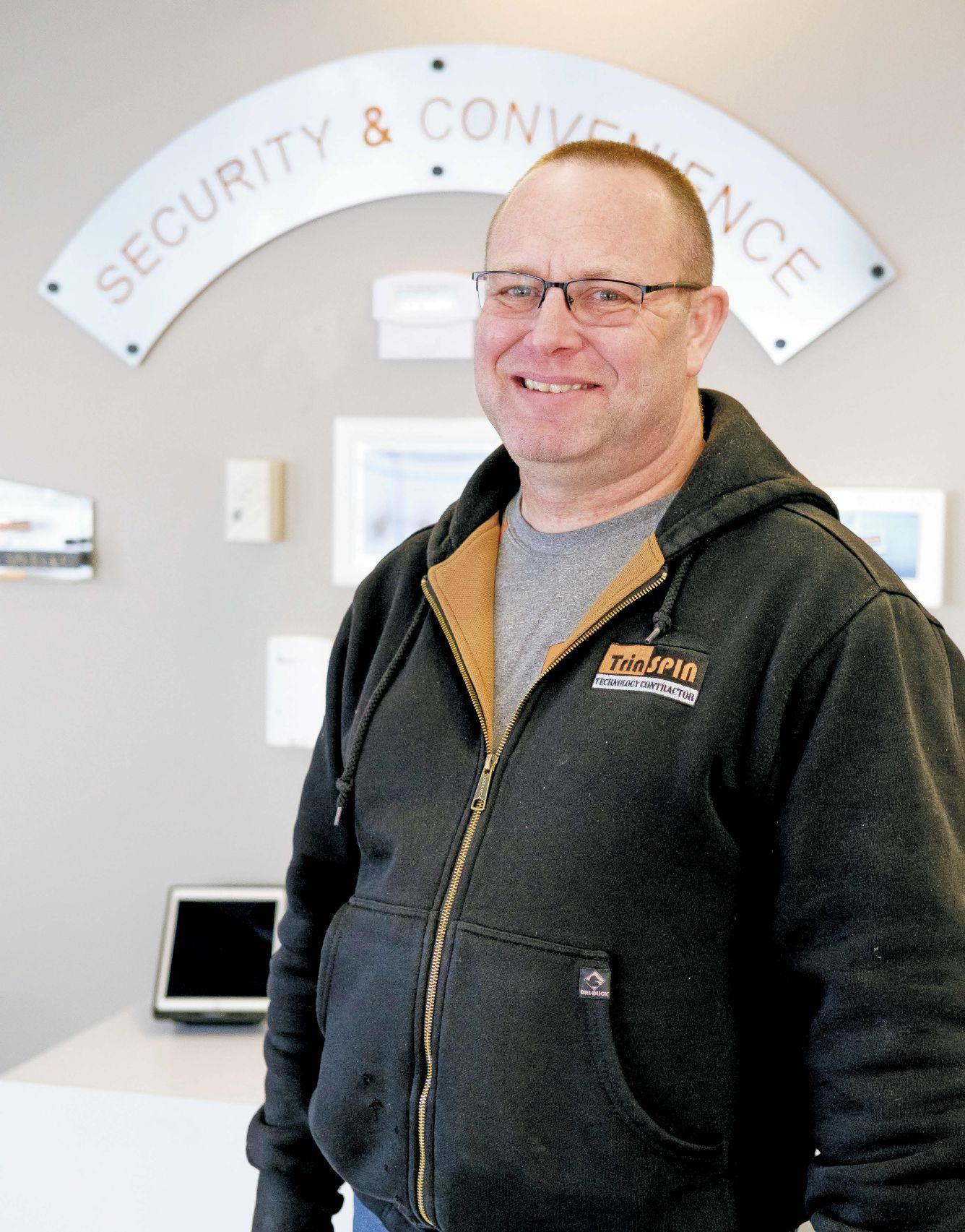
PREMIER BUSINESS MAGAZINE OF THE NORTHERN PLAINS | FEBRUARY 2018
Trinity Schaff, founder and president TrinSPIN technology contractor Fargo, N.D.









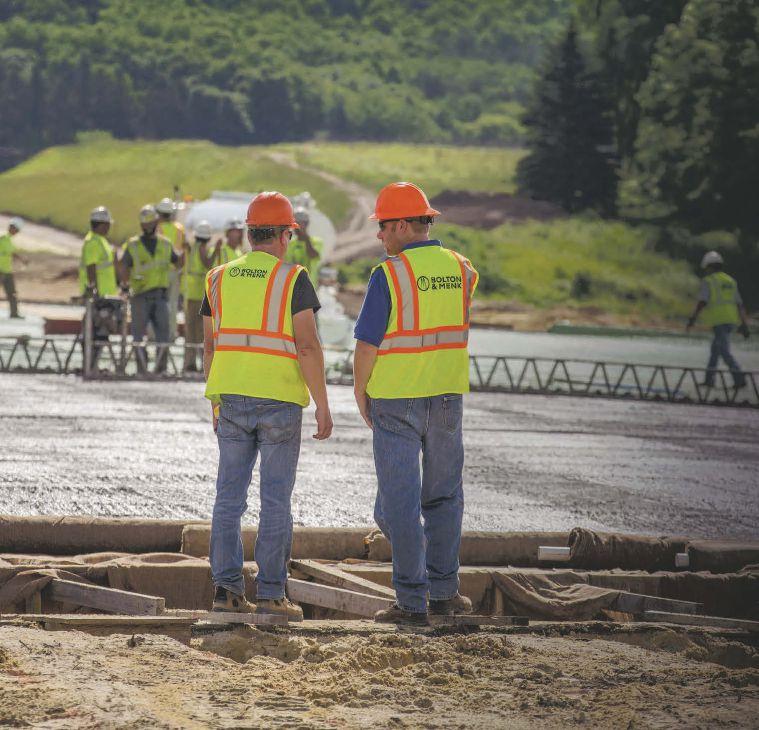








2 TWITTER.COM/PRAIRIEBIZ FACEBOOK.COM/PRAIRIEBUSINESS PRAIRIEBUSINESSMAGAZINE.COM We take a personal interest in the work being done around us. And at the end of the day, we’re Real People offering Real Solutions. Civil & Municipal Engineering & Planning Water & Wastewater Engineering Transportation Planning & Engineering Aviation Services Water Resources Engineering Planning & Urban Design Land Surveying Geographic Information System Project Funding & Financing bolton-menk.com






Three teams, two rinks, one great community. Welcome home, Packers-United-Mustangs and West Fargo Public Schools. jlgarchitects.com 100% EMPLOYEE OWNED Inc. Magazine’s 50 Best Places to Work in America | Architect Magazine Top 50 US Firm WEST FARGO SPORTS ARENA | WEST FARGO, NORTH DAKOTA HOW THE WEST WAS WON Three teams, two rinks, one great community. Welcome home, Packers-United-Mustangs and West Fargo Public Schools. jlgarchitects.com 100% EMPLOYEE OWNED Inc. Magazine’s 50 Best Places to Work in America | Architect Magazine Top 50 US Firm WEST FARGO SPORTS ARENA | WEST FARGO, NORTH DAKOTA HOW THE WEST WAS WON



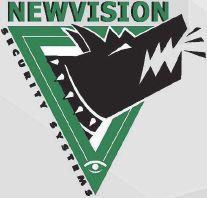


4 TWITTER.COM/PRAIRIEBIZ FACEBOOK.COM/PRAIRIEBUSINESS PRAIRIEBUSINESSMAGAZINE.COM 1313 Republic St A • Bismarck, ND 58504 • 8AM–5PM • (701) 222-8888 SECURITY IS OUR BUSINESS NEWVISIONND.COM COMMERCIAL SECURITY Complete Design and Installation Industry Leading Equipment Monthly Monitoring cameras • alarms keycard access • fire alarms COMMERCIAL, AGRICULTURAL AND HOME SECURITY SOLUTIONS THE MOST ADVANCED SECURITY SYSTEM YOU CAN BUY TO PROTECT YOURSELF AND YOUR BUSINESS! 001679702r1 Free Estimates
Evolved.
Perfectly designed to thrive in its environment. Adaptable enough to evolve with the times. Building smart for a solid future. It’s second nature at KLJ.

K LJ E NG .CO M



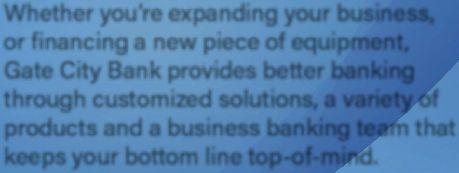


















6 TWITTER.COM/PRAIRIEBIZ FACEBOOK.COM/PRAIRIEBUSINESS PRAIRIEBUSINESSMAGAZINE.COM












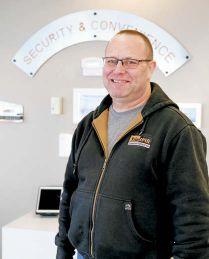
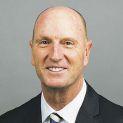
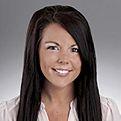
8 TWITTER.COM/PRAIRIEBIZ FACEBOOK.COM/PRAIRIEBUSINESS PRAIRIEBUSINESSMAGAZINE.COM FEBRUARY 2018 VOL 19 ISSUE 2 PRAIRIEBU SINESSMAGAZINE.COM FEATURES DEPARTMENTS 24 ARCHITECTURE & ENGINEERING SMART BUILDINGS THIS INFLUENTIAL TREND IS COMING SOON TO A HOME OR OFFICE NEAR YOU 28 TAXES 21 PERCENT HERE’S WHAT THE U.S. GOVERNMENT’S NEWLY REDUCED CORPORATE TAX RATE MEANS FOR THE REGION ON THE COVER Trinity Schaff, founder and president of TrinSPIN, Inc., stands in the showroom of the building automation and electronics business in Fargo, N.D. IMAGE: NICK NELSON/ FORUM NEWS SERVICE prairie people VISIT WWW.PRAIRIEBUSINESSMAGAZINE.COM TO SEE THESE AND OTHER NEW HIRES, PROMOTIONS AND AWARD WINNERS IN THE REGION. SCOTT BANKS ASHLEY ROGERS WAS NAMED VICE PRESIDENT AND CHIEF FINANCIAL OFFICER AT CHI ST. ALEXIUS HEALTH BISMARCK. BANKS HOLDS AN ACCOUNTING DEGREE FROM BRIGHAM YOUNG UNIVERSITY AND A HEALTH ADMINISTRATION MASTER’S DEGREE FROM WEBER STATE UNIVERSITY, OGDEN, UTAH. AN AUDIOLOGIST, RECENTLY JOINED THE SANFORD HEALTH FARGO TEAM. ROGERS RECEIVED HER DOCTOR OF AUDIOLOGY DEGREE FROM THE UNIVERSITY OF WISCONSIN IN MADISON. SHE PRACTICES AT SANFORD HEALTH BROADWAY CLINIC. Among its other automated features, this
in Hermantown, Minn., integrates “daylighting” via Solatubes.
technology
space. IMAGE: WIDSETH SMITH NOLTING 8 10 EDITOR’S NOTE ALL SYSTEMS ARE GO BY TOM DENNIS 12 CREDIT WHEN INTEREST RATES CHANGE IN WASHINGTON, BUSINESS LIFE CHANGES ON THE PLAINS BY DENNIS WALSH 14 MARKETING SMART MARKETING TELLS CUSTOMERS ABOUT NOT ONLY PRODUCTS, BUT ALSO A COMPANY’S CULTURE BY MATTHEW MOHR 16 EMPLOYMENT LAW FOLLOWING THESE GUIDELINES CAN HELP PROTECT YOUR EMPLOYEES AS WELL AS YOUR COMPANY FROM SEXUAL HARASSMENT CLAIMS BY HEATHER SPRINGER 18 BANKING & FINANCE/ BUSINESS INSIDER A Q&A WITH RICK CLAYBURGH, PRESIDENT OF THE NORTH DAKOTA BANKERS ASSOCIATION 22 PRAIRIE PEOPLE 32 NONPROFIT AT THE NORTH DAKOTA SAFETY COUNCIL’S NEW HOME, THE SAFETY TRAINING OFFERED IS ALL HANDS-ON 36 INSIGHTS & INTUITION 38 BY THE NUMBERS
Mills Fleet Farm store
The
uses advanced optics to bring natural light through a roof and into a
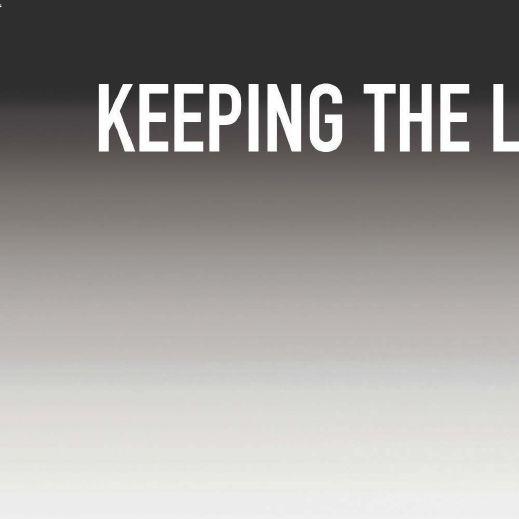


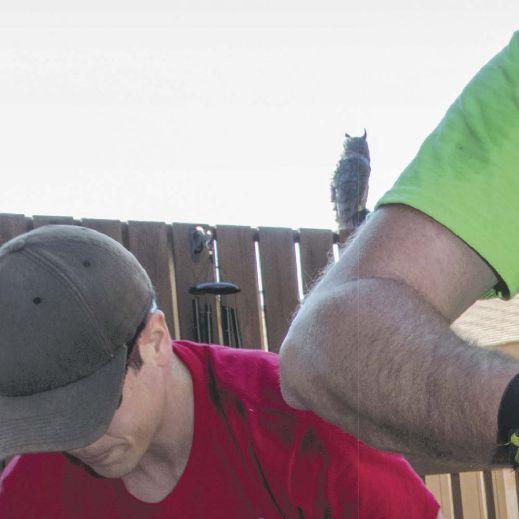



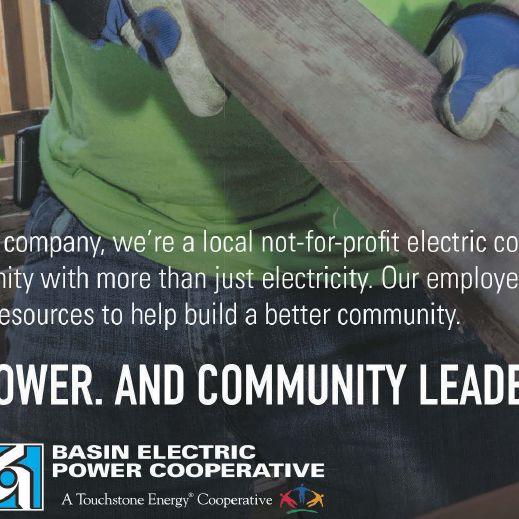

tdennis@prairiebusinessmagazine.com
All systems are go O
ne of these days, the upward trends will peak. They’ll hover at their summit and then reverse, starting to slide: employment rates fall, companies retrench, the regional economy contracts.
That has happened in the Dakotas and western Minnesota before, and it’ll happen again. One of these days.
But not today.
I continue to be impressed by the “sweet spot” that the economy occupies in Prairie Business’ circulation area. And in this issue of the magazine, there’s evidence that the trends will continue, possibly through 2018 and even beyond.
Our story about the impact of the corporate tax-rate cut makes that plain. Companies aren’t offering many specifics yet; the federal government’s new tax rates are complicated, and CFOs around the region still are figuring out what the changes mean.
But to a person, everyone we asked said the tax-rate cut is likely to give local companies, and thus the region’s economy, a boost. And the thing is, of course, the economy in Fargo, Sioux Falls, Bismarck and elsewhere already is going strong. That’s reflected in other stories in this issue, such as the one showing engineers’ excitement over constructing “smart buildings,” and the report about the North Dakota Safety Council’s opening a state-of-the-art safety-training center – a project that would have been much harder to complete in a depressed economy.
We know winter here in the upper Midwest, so when summer comes, we appreciate it. LIkewise, we’ve long known economic winter.
So now that the sun of the market is shining (as it has been for several years), this winter feels a lot like spring. There’s snow on the ground, sure, but there also are construction cranes swinging, oil rigs pumping and ribbon cutters cutting, as this month’s issue reports. Enjoy. PB
Good reading, Tom Dennis
I welcome your feedback and story ideas. Call me at 701-780-1276 or email me at tdennis@ prairiebusinessmagazine.com.

PUBLISHER KORRIE WENZEL
AD DIRECTOR STACI LORD EDITOR
TOM DENNIS
CIRCULATION MANAGER BETH BOHLMAN
LAYOUT DESIGN, AD DESIGN JASON MAGSTADT KRIS WOLFF
ACCOUNT MANAGER NICHOLE ERTMAN 800.477.6572 ext. 1162 nertman@prairiebusinessmagazine.com
JENNIFER LEROUX OLSZEWSKI 800.477.6572 ext. 1167
jlolszewski@prairiebusinessmagazine.com
Prairie Business magazine is published monthly by the Grand Forks Herald and Forum Communications Company with offices at 375 2nd Avenue North, Grand Forks, ND 58203. Subscriptions are available free of charge. Back issue quantities are limited and subject to availability ($2/copy prepaid). The opinions of writers featured in Prairie Business are their own. Unsolicited manuscripts, photographs, artwork are encouraged but will not be returned without a self-addressed, stamped envelope.
SUBSCRIPTIONS
Subscriptions are free www.prairiebusinessmagazine.com
ADDRESS CORRECTIONS
Prairie Business magazine Box 6008 Grand Forks, ND 58206-6008 Beth Bohlman: bbohlman@prairiebusinessmagazine.com
ONLINE www.prairiebusinessmagazine.com
FEBRUARY 2018 VOL 19 ISSUE 2
TWITTER.COM/PRAIRIEBIZ FACEBOOK.COM/PRAIRIEBUSINESS PRAIRIEBUSINESSMAGAZINE.COM 10
TOM DENNIS
701.780.1276 EDITOR








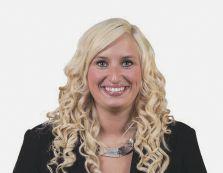





Interesting times for interest rates
Keep track of the Fed’s rate changes, because they’ll affect your business in 2018 and beyond
By Dennis Walsh
FARGO, N.D. – This time of the year, many of us are looking ahead and considering how the world around us will impact our business strategies. As a banker for the past 38 years and in my current role as chief credit officer for First International Bank & Trust, I am often called upon to share my thoughts about not only how to best operate our business, but also how to help our customers plan for their futures.
These are interesting times as we consider the impact the rising interest rate environment has on business.
Four rate increases by the Federal Reserve in the past year have caught the attention of individuals and businesses, as the prime rate has jumped from 3.5 percent to 4.5 percent. To put this in perspective, the prime rate was at a historically low level of 3.25 percent for more than seven years following the 2008 downturn.
For those of us who remember rates of more than 20 percent in the early 80s and consistently over 12 percent for most of a decade, these rates seem very low. But many in business (and especially financial services) have never experienced double-digit borrowing rates.
So, rate increases have stimulated discussion about future rate trends and potential impacts to businesses and individuals.
The Federal Reserve has indicated that rate increases may continue in 2018, prompting speculation that rates may increase another ½ percent to 1 percent. But the Fed’s decisions will be impacted by economic trends, especially inflation and Gross Domestic Product growth.
Also, the global economy will impact domestic rates, as much of the world still has lower interest rates than America. Continued domestic growth coupled with strong global growth, especially in major economies, could signal a longer-term trend of increasing rates.
Thankfully, we have seen optimism arise from the small business sector as a result of the reduction in corporate tax rates, which should have positive impact on our economy.
Businesses considering the purchase of long-term assets also are impacted by higher rates. This impact is strongest for assets (such as real estate) that provide a lower level of return on investment.
Additionally, the carrying costs of inventory and underperforming assets become larger concerns as rates increase Higher interest rates require all businesses to reassess borrowing costs in management decisions. Also, businesses that have grown with debt and are carrying
significant long-term debt feel the immediate impact of higher interest costs to their bottom line.
As in any economic condition, it’s always good to use prudent business practices when examining expansion and growth initiatives. Consult with a trusted financial partner to build out “what if” scenarios so that you can best be prepared with a structure in which your business can still thrive.
Agriculture producers are significantly impacted by higher interest rates because of the large capital requirements for ownership of land and expensive equipment. Agricultural real estate has historically low return on investment, so the low interest rates of the past 15 years have helped to stimulate agricultural real estate values.
Higher long-term rates coupled with current commodity values and declining agricultural income could put significant pressure on agricultural real estate values.
Some businesses that do not depend on large fixed assets may feel little direct impact from higher interest rates. However, if the rates slow economic growth or hurt business clients, all businesses may experience indirect impacts.

The high rates of the early 1980s were used as a tool to stop rampant inflation, but they also slowed economic growth to a crawl.
As businesses and individuals, we can speculate on interest rate trends, but none of us know for certain what will happen. Just as we need to make adjustments for outside forces beyond our control such as weather, competition and economic trends, we need to manage the impact of interest rates.
It’s important to surround yourself with a team of experts who can examine all aspects of your business and direct you to a safe yet profitable path.
Without a doubt, we are in a time of change. Lean on those of us who have traveled this journey once before. Strongly managed businesses with guiding principles may continue to enjoy success in spite of increasing interest rate impacts. PB
Dennis Walsh CHIEF CREDIT OFFICER, FIRST INTERNATIONAL BANK &
12 TWITTER.COM/PRAIRIEBIZ FACEBOOK.COM/PRAIRIEBUSINESS PRAIRIEBUSINESSMAGAZINE.COM CREDIT FEBRUARY 2018 VOL 19 ISSUE 2
FARGO FIRSTINTLBANK.COM
TRUST
Dennis Walsh, chief credit officer of First International Bank & Trust of Fargo, stands in the bank’s branch in Rugby, N.D.
We look forward to many, many years in our awesome new home!






We are so excited and thrilled with our new facility. It not only gives us the efficient work and meeting spaces we were striving for, but also captures, by its beautiful design, many elements that relate directly to our company and our work. —Karen Thingelstad, Vice

 President & CFO
President & CFO


13
Connect With Us www.eapc.net
Minnkota Power Cooperative’s New Corporate Campus, Grand Forks, North Dakota
The key ingredient
success
By Matthew Mohr
FARGO, N.D. – Every organization creates its own marketing strategy. Most customers who stay with a business over time do so because they feel they get value from the business. In other words, the business strategy is aligned with what the customer values. What is successful at one business may be disastrous at another.
It’s not unusual for people who are new to an organization to compare strategies and try to make changes, thinking alternate practices or ways of creating success are better. Evolutionary change is reasonable and good for an organization. Revolutionary change, however, is not generally the path to greater success. Similarly, following another successful business’ practices may not work.
As we look at the dramatic change in our retail sector over the past century, it is evident we had two large shifts in consumption patterns. Sears changed consumer habits from buying what was available locally to national sales consumption based on a wide variety of quality products (many of which were not easily available at shoppers’ local stores).
Sears employees were taught to learn about the products and provide high service to customers. Walmart followed Sears with local “Big Box” stores offering a variety of low-cost goods and low service levels.
Both strategies worked for quite a while. Then as Sears attempted to maintain market dominance, it chose to follow a different path. To reduce costs, employees became less directed, and the corporation bought Kmart in what was seen as an opportunity for growth. Unfortunately, the culture and market strategy at Sears were not good matches for Kmart. Lifetime quality guarantees were no longer honored, and knowledgeable employees became scarce. It wasn’t too long before sales started falling, and loyal customers went elsewhere.
As Sears continued to struggle, the company’s mixed culture and direction led to continued poor results.
More recently, Amazon has put tremendous pressure on both Walmart and Sears. Amazon has a much different culture and way of marketing than either Sears or Walmart, and who will survive is yet to be determined.
Amazon is in a position to change rapidly, and its market dominance is undeniable. But Amazon’s flaws became obvious when the hurricanes hit Florida and Amazon couldn’t deliver as promised, along with blaming price gouging on its third-party sales agents.
When Amazon announced the acquisition of Whole Foods, my young nephew posted: “Who could have imagined getting your groceries delivered right to your front door?” I gladly reminded him that my great-grandparents owned and operated a corner grocery store, and at that time, they delivered a lot of what they sold – right to the customer’s home.
I also commented, “Will current Whole Foods customers accept Walmart quality, or will Walmart shoppers pay Whole Foods prices?”
Amazon has already begun to make changes at Whole Foods, but it’s too early to know if the changes will be successful. Amazon and those copying it need to pick a sustainable strategy.
A local businessman and friend of mine summarized a low general pricing strategy as: “Lower prices only can come from poorer quality products or poorer service.” Trying to compete on price alone is not a path to sustained success.
To survive, a business has to be profitable and add value for the customer, and its marketing strategy is the key to how a profit is created. There is truth in the old saying, “You get what you pay for.” PB
Matthew Mohr CEO, DACOTAH PAPER CO. FARGO MMOHR@DACOTAHPAPER.COM

14 TWITTER.COM/PRAIRIEBIZ FACEBOOK.COM/PRAIRIEBUSINESS PRAIRIEBUSINESSMAGAZINE.COM FEBRUARY 2018 VOL 19 ISSUE 2
MARKETING
Marketing remains vital in the recipe for business
Matthew Mohr IMAGE: DACOTAH PAPER CO.




15
Sexual harassment
How to protect your employees and your company
By Heather Springer
SIOUX FALLS, S.D. – The topic of sexual harassment is everywhere right now. This increased focus began far from South Dakota, but it is raising the awareness of employers everywhere.
In fact, in the recent case of Laura Zylstra Kaiser v. Bryan Gortmaker, the director of the South Dakota Division of Criminal Investigation, the jury awarded Kaiser more than $1.2 million on gender discrimination and retaliation claims.

What does this mean for employers? As more people feel enabled to raise concerns, employers would be wise to review whether and how they are protecting their employees, as well as their company.
The following are a few guidelines employers should follow to ensure they are preparing their own workplaces:
1. Examine your culture
As an employer, it is vital for you to consistently monitor your workplace and communicate with employees, including managers, regarding the work environment.
By engaging in a proactive approach, you will be able to better identify, prevent and respond to potential or existing issues.
A key question is not just whether there is a culture of compliance, but also whether it reaches to the top of the organizational chart. Specifically, do workers perceive that C-suite or other very important employees have a different set of rules than the regular employees do?
2. Review your policies
Make sure you have sufficient anti-harassment policies. At a minimum, such policies should:
(1) prohibit harassment and discrimination
(2) provide procedures for reporting harassment
(3) identify procedures for investigating complaints
(4) address discipline for policy violations
(5) prohibit retaliation against employees who report harassment or discrimination in good faith.
The deeper question, however, is whether your policies translate into actual protections for employees. Some employers make significant distinctions between formal and informal complaints and make the complaint process overly burdensome for employees. In effect, these employers discourage complaints, particularly against top-level employees.
Therefore, it is crucial to ensure your employees are protected both through the complaint process and from retaliation, as an employee’s fear often prevents that employee from raising concerns about someone with greater clout in the organization.
3. Train your employees
You should provide general training to employees regarding your employment policies and procedures, and you should encourage employees to report any misconduct they experience or observe.
4. Train your managers
In general, the actions of managers are attributable to their employers and can give rise to employer liability. Moreover, managers are responsible for both their own actions and the actions of the employees they supervise.
Therefore, the importance of training your managers to identify and respond to allegations of harassment and discrimination cannot be overstated. All managers – especially high-level employees – should be routinely trained on policies and procedures for responding to complaints.
16 TWITTER.COM/PRAIRIEBIZ FACEBOOK.COM/PRAIRIEBUSINESS PRAIRIEBUSINESSMAGAZINE.COM FEBRUARY 2018 VOL 19 ISSUE 2
EMPLOYMENTLAW
Heather Springer is an employment law attorney with Woods, Fuller, Shultz and Smith in Sioux Falls, S.D. IMAGE: WOODS, FULLER, SHULTZ AND SMITH
5. Follow your procedures
Upon receipt of an employee complaint, do not overreact. Given the current climate, some employers feel the need to proceed with immediate termination or other forms of adverse action. Instead, you should follow your normal investigation procedures and fully investigate any complaint before taking adverse action.
You should also, however, very carefully protect any employee who files a complaint.

As demonstrated in recent months, no workplace or industry is immune from allegations of harassment or misconduct. For employers, the primary goal is to train employees in order to reduce incidents of harassment or misconduct in the workplace. However, employers still need to be prepared to respond to such allegations if and when they arise.

Keeping the foregoing guidelines in mind provides a starting point for employers in preparing for and responding to complaints.
With the largest team of employment lawyers in South Dakota, Woods, Fuller, Shultz & Smith P.C. assists employers with training and preparation to reduce the risk of harassment and properly respond in the event of a complaint. PB
 Heather Springer EMPLOYMENT LAW ATTORNEY WOODS, FULLER, SHULTZ AND SMITH P.C. SIOUX FALLS, S.D. HEATHER.SPRINGER@WOODSFULLER.COM
Heather Springer EMPLOYMENT LAW ATTORNEY WOODS, FULLER, SHULTZ AND SMITH P.C. SIOUX FALLS, S.D. HEATHER.SPRINGER@WOODSFULLER.COM



17
Bank on it
Community banks remain cornerstones of most North Dakota towns, and the state is better off as a result, says the ND Bankers Association’s president and CEO

Q. A.
WHEN YOU GO TO NATIONAL CONFERENCES, WHAT ELEMENTS OF NORTH DAKOTA BANKING DO YOU FIND YOURSELF DESCRIBING? IN OTHER WORDS, WHAT SETS NORTH DAKOTA BANKING APART?
Being from North Dakota, I am proud to answer questions regarding Carson Wentz, Cara Mund and what’s happening in the Bakken. But the No. 1 question that I get by far is about the Bank of North Dakota and its relationship with the state’s banking community.
The only state-operated bank in the country, BND provides a unique competitive advantage. It does this by acting as a “banker’s bank” to help North Dakota banks meet the credit and financial needs of North Dakotans and our communities.
Here’s an example. Banks are the backbone of our economy; they touch the daily lives of their customers and put deposits back to work in their communities. And a bank’s ability to do this has been made much more difficult by the avalanche of rules brought about by the Dodd-Frank Act of 2010.
One of the most critical and altered areas was mortgage lending. The new requirements were so onerous that some smaller North Dakota banks found themselves lacking the staff and other resources to comply. As a result, BND developed a program to help local banks both comply with the new rules and make mortgage loans more available.
BND fulfills its mission to “promote agriculture, commerce and industry” in North Dakota and to “be helpful to and assist” North Dakota banks. Whether through loan participation programs, assistance with rural mortgage lending or capital assistance for farmers, BND is a vital partner to North Dakota banks, which – despite ebbs and flows in the economy – remain among the safest and soundest in the nation.
18 TWITTER.COM/PRAIRIEBIZ
PRAIRIEBUSINESSMAGAZINE.COM FEBRUARY 2018 VOL 19 ISSUE 2 BANKING&FINANCE/BUSINESSINSIDER
FACEBOOK.COM/PRAIRIEBUSINESS
Q. A.
WHAT ARE COMMUNITY BANKS, AND WHAT ROLE DO THEY PLAY IN THE REGION?
A community bank is a cornerstone of a community. A bank’s presence in a town means the bank has a direct stake in that community’s growth, health and vitality. A bank’s presence also is a symbol of hope and a vote of confidence in a town’s future.
When a bank sets down roots, communities thrive.
A community bank’s success rests on the bankers’ knowledge of local markets, market participants and business environment, as well as their ability to customize services. Small businesses (and businesses focused on smaller markets) depend heavily on community banks for many financial services, especially credit terms sensitive to local business conditions. This local knowledge benefits community banks’ customers as banks are able to support their customers through the business cycle’s ups and downs.
In many small communities, the local community bank is often the only banking service available. Community banks specialize in making loans to small businesses, generating 41 percent of these types of loans and 82 percent of agricultural loans nationwide.
WHAT TRENDS DO YOU SEE EMERGING IN THE REGION’S BANKING MARKETPLACE?
Because of the increasing costs of regulation and supervision as well as the challenges of workforce and succession, we expect to see continued consolidation and mergers. For a family-owned bank, succession can be challenging. In many rural communities, kids head off to college and may not be interested in coming back to run the bank.
Cyber and data security also remain top priorities for banks. Criminals are constantly searching for new ways to steal money through fraud and cybersecurity vulnerabilities. And as consumers and businesses rely more on smartphones and other electronic devices, vulnerabilities increase.
Last year, a massive security breach at the credit-reporting company Equifax exposed 140 million Americans to possible fraud. The impact on banks was substantial because banks must protect customers’ information and money.
Nowadays, banks must seek out and address vulnerabilities in their own systems as well as guard against threats that originate with the negligence of third parties.
Banks also are focusing on changing demographics. For years, banks have put tremendous effort into making their in-branch experience customer focused. As the millennial and later generations grow up and start careers, bankers need to respond to how those young people want to bank, borrow, invest, deposit and plan their futures.
Bankers will need to be innovative in not only communicating with customers, but also developing personal relationships with them, just as bankers did with the customers’ parents and grandparents.

By focusing on changing demographics, banks will be leveraging financial technology and partnering with startups to ensure that their digital experience matches their top-notch branch experience.
BANKING’S FUTURE CERTAINLY INCLUDES MORE “CLICKS.” SO, WHAT ABOUT “BRICKS”? WHAT SHOULD NORTH DAKOTANS EXPECT ABOUT THE NUMBER OF BANK BRANCHES?
Meanwhile, as banks are focused on enhancing their customer’s digital experience, branch banking is not going anywhere. Today’s technologies provide customers with convenience, which means they may not need to step into a branch to deposit a check. But community banking has always been about relationships, and branches are an important venue for banks to connect with and serve their customers and communities. That relationship is developed when a small business owner or ag producer sits down with his or her local banker to talk about the business and address credit needs.
19 BANKING & FINANCE/ BUSINESS INSIDER
Q.
Q. A.
A.
Rick Clayburgh, president and CEO of the North Dakota Bankers Association, stands in front of the vault doors of the Bank of North Dakota in Bismarck.
IMAGE: KYLE MARTIN PHOTO
BANKS EVERYWHERE ARE TRYING TO IMPROVE THE RETAIL CUSTOMER EXPERIENCE, OFTEN WITH MOBILE APPS, VOICE BANKING AND THE LIKE. WHAT TECH INNOVATIONS HAVE YOU HEARD ABOUT RECENTLY THAT HAVE MADE YOU SAY, “WOW!”?
Tech innovations have been rapidly advancing and improving customers’ banking experiences. Two of the more intriguing advancements are in the areas of biometric and regulatory technologies.
Biometric technology is particularly interesting. As trusted custodians of their customers’ most sensitive data, banks are the gold standard in data security. Traditionally, to better secure digital services, you had to make those services harder for customers to access. With recent developments in biometric technology, banks can better secure customers’ accounts while providing customers with a seamless banking experience.
Regulatory Technology or RegTech has huge potential to improve the banking experience. This involves using technology to help banks comply with regulatory requirements. It is no secret that regulatory burden has increased tenfold over the past 10 years. This burden is particularly acute for small-staffed community banks.
RegTech has the potential to automate a bank’s call report, simplify a bank’s suspicious activity reports and provide for machine learning of new regulations. This can provide a “win win” that promises to give regulators better insight into the banks they oversee while reducing regulatory burden and allowing banks to focus on serving their customers.
Q. A.
WHAT KEY MESSAGES DOES THE NORTH DAKOTA BANKERS ASSOCIATION HOPE TO COMMUNICATE TO STATE AND FEDERAL LAWMAKERS IN 2018?
With no legislative session in North Dakota in 2018, NDBA’s main focus will be on Washington, most notably regulatory relief and support for the new Farm Bill.
Regulatory relief is not a new issue, yet its importance grows every day. The sheer volume of bank regulations, especially for community banks, is hurting those banks’ ability to meet customers and communities’ needs.
Perhaps the most obvious impact of excessive regulations has been on the rapid consolidation of bank charters. For the first time since the 1890s, there now are fewer than 6,000 banks. And since the 2010 enactment of Dodd-Frank, 1,976 banks – 25 percent of the total -- have disappeared.
Certainly, consolidation would have occurred without that legislation, but the sheer pace is concerning. More than 43 percent of banks with under $100 million in assets have been eliminated, as have 17 percent of banks between $100 million and $1 billion.
The concern is this trend will continue until some relief is provided to community banks.
Regarding regulatory relief, bankers’ immediate focus is on Congress passing the Economic Growth, Regulatory Relief and Consumer Protection Act (S. 2155). In late December, the Senate Banking Committee passed this bill out of committee with a bipartisan 16-7 vote. The legislation, which was crafted by Senate Banking Committee Chairman Mike Crapo of Idaho and a group of moderate Democrats led by North Dakota Sen. Heidi Heitkamp, represents the first meaningful regulatory reform measure to be taken up in the Senate Banking Committee since the enactment of Dodd-Frank.
Enactment of the legislation will go a long way toward giving community banks the relief they need to better serve their customers and communities.
Regarding the Farm Bill, the vast majority of North Dakota banks hold most of their loan portfolio in ag loans. Banks are one of the largest providers of credit for North Dakota’s farmers and ranchers. It is important for ag customers and banks to support the passage of a Farm Bill with meaningful crop insurance provisions.
Not only will that provide a strong safety net for producers, but also it will boost lenders’ confidence to provide farmers and ranchers the capital they need to produce our nation’s food, fuel and fiber.

20 TWITTER.COM/PRAIRIEBIZ FACEBOOK.COM/PRAIRIEBUSINESS PRAIRIEBUSINESSMAGAZINE.COM FEBRUARY 2018 VOL 19 ISSUE 2 BANKING&FINANCE/BUSINESSINSIDER
Q. A.
The Bank of North Dakota – the country’s only state-owned bank – is the institution that sets North Dakota banking apart, North Dakota Bankers Association President and CEO Rick Clayburgh says. The bank moved into its current headquarters (pictured here) in 2008. IMAGE: BND
Rick Clayburgh is a former North Dakota tax commissioner, a job for which he was elected statewide three times. He has served as the president and CEO of the North Dakota Bankers Association since 2005. He is a graduate of Concordia College in Moorhead, Minn., and holds a law degree from the University of North Dakota School of Law.
Rick Clayburgh
IT MAT TERS.


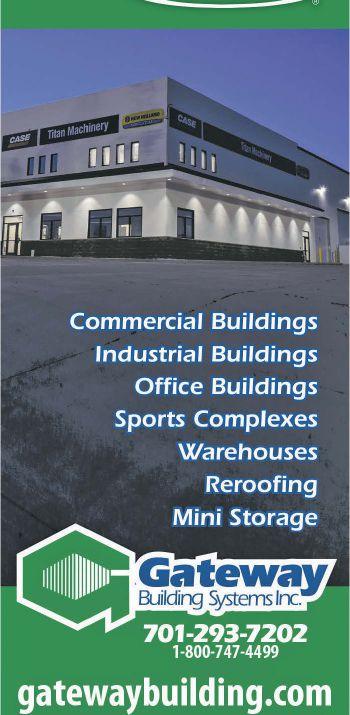

To
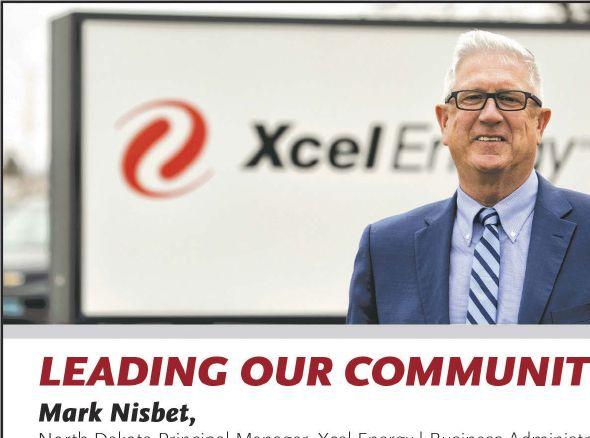






21
us, your project isn’t a job - it’s an opportunity to make a positive impact, protect future generations, and ensure the vitality of where we live and work. It matters. Advanced Engineering and Environmental Services, Inc. Providing engineering and related services to help clients achieve success. www.ae2s.com
QUALITY WATER INTERACTIVE GIS SUSTAINABLE ROADS WATER RESOURCES WASTEWATER TREATMENT
PRAIRIE PEOPLE
NORDBERG NAMED U.S. SMALL BUSINESS ADMINISTRATION’S REGION VIII ADMINISTRATOR
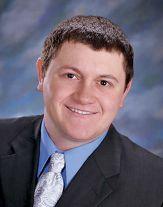
WASHINGTON – Daniel Nordberg will oversee U.S. Small Business Administration programs, offices and operations in Colorado, North Dakota, Montana, South Dakota, Utah and Wyoming, the SBA’s Region VIII, announced U.S. SBA administrator Linda McMahon.
The Region VIII office is based in Denver.
Nordberg was a three-time elected state representative for 75,000 constituents in House District 14 in the Colorado General Assembly.
Before serving in the Legislature, Nordberg worked as district director for U.S. Rep. Doug Lamborn, R-Colo.
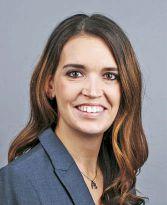

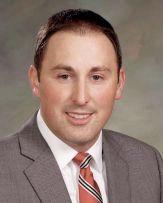
Born and raised in Colorado, Nordberg graduated from Colorado State University with a bachelor’s degree in political science. He and his wife Maura, a school psychologist, are the parents of three children.
THREE AT KLJ EARN PROFESSIONAL LICENSES
BISMARCK, N.D. – Jake Braunagel, Jordan Gerber, and Alex Goerke have earned professional engineering (PE) licenses in various states, engineering firm KLJ announced.
Braunagel earned his license in Minnesota. He works in KLJ’s Sioux Falls, S.D., office and earned a bachelor’s degree in civil engineering from North Dakota State University. He is also licensed in North and South Dakota.
Gerber earned his license in North Dakota. He works in the company’s West Fargo office and earned a bachelor’s degree in civil engineering from North Dakota State University.
Goerke earned his license in Minnesota. He works in KLJ’s St. Paul office and earned a bachelor’s degree in civil engineering from North Dakota State University.
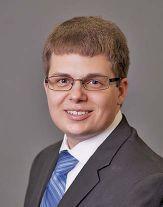
BISMARCK, N.D. – CHI St. Alexius Health is pleased to welcome nurse practitioners Kristie Todd-Reisnour and Amy Wilkens to its new primary care clinic in Bismarck.
Todd-Reisnour received her bachelor of science in nursing from Medcenter One College of Nursing in Bismarck, and earned her master of science in nursing from University of Mary in Bismarck.
Wilkens received her bachelor of science in nursing from the University of North Dakota, Grand Forks, N.D. and her doctorate of nursing practice from the University of Wyoming. She is board certified by and a member of the American Association of Nurse Practitioners.
FENGER AND SWARTZ JOIN HOUSTON ENGINEERING
FARGO, N.D. – Two new hires have joined Houston Engineering in Fargo: Quinn Fenger and Sami Swartz.
Fenger is joining HEI’s Proposal Team as a proposal assistant where he will help with proposal and qualifications preparation. Originally from Cottonwood, Minn., Fenger earned his bachelor’s degree in English from Minnesota State University, Moorhead. He also holds a certificate in publishing.
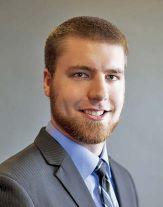

Swartz is joining the company’s GIS Team in Fargo as a GIS technician, where she will be supporting the environmental science group.
She is originally from Grafton, N.D., and graduated from the University of North Dakota with a bachelor’s degree in geography and wildlife biology in 2017. She previously interned for KLJ in Bismarck, N.D.

22 TWITTER.COM/PRAIRIEBIZ FACEBOOK.COM/PRAIRIEBUSINESS PRAIRIEBUSINESSMAGAZINE.COM FEBRUARY 2018 VOL 19 ISSUE 2 PRAIRIEPEOPLE
NURSE PRACTITIONERS JOIN CHI ST. ALEXIUS HEALTH CENTURY FAMILY CLINIC
Kristie Todd-Reisnour
Amy Wilkens
Alex Goerke
Jordan Gerber
Sami Swartz
Jake Braunagel
Quinn Fenger
let’s PUT SOME “WOW” IN YOUR WORKDAY.























































Marco’s audio/video systems help you create a great impression, while helping your team work smarter and stay better connected.
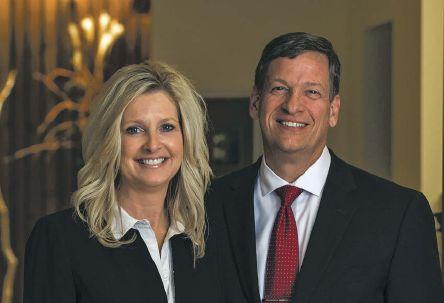



Marco’s technolo-geniuses will hook you up with the right systems for your needs—from video and sound systems…to audio and video conferencing…to digital signage, room automation and more. And we’ll keep it running smoothly with training for your staff and our best-in-the-business support. Learn how Marco’s audio/video technology can help you turn heads.



23 business IT // managed services // cloud services // copiers & printers marconet.com
T R U S T C O M P A N Y Rick Thoreson (701) 478-3338 • Kelly Steffes (701) 478-3339 210 Broadway N, Fargo, ND • www.thoresonsteffes.com
Kelly Steffes
Dedicated financial stewardship. We’ll help you simplify your financial path to build the resources to live as you choose.
Rick Thoreson
smartBuildingbuildingswithsmart
 By Tom Dennis
By Tom Dennis
the Dakotas and
MInnesota,
In
western
talk of a ‘revolution’ in building automation seems to apply
24 TWITTER.COM/PRAIRIEBIZ FACEBOOK.COM/PRAIRIEBUSINESS PRAIRIEBUSINESSMAGAZINE.COM FEBRUARY 2018 VOL 19 ISSUE 2 ARCHITECTURE&ENGINEERING
FARGO, N.D. – Slowly at first. Then all at once. That’s the way bankruptcy develops, Ernest Hemingway famously said.
But in a more positive example, it’s also the way smart-building technology is making its way into our area.
“The triumph of home technology is as certain as the sun,” a columnist with the Columbus (Ohio) Dispatch wrote in early January. In the Dakotas and western Minnesota, that sun’s already on the rise, as the growing popularity of smart thermostats, smart light bulbs, smart refrigerators and smart offices and other buildings shows.
Slowly at first
The idea of remotely controlling lights, TV sets, alarms and other building systems is not new. In fact, it dates back at least to 1978, when X10 building automation products first started appearing in Sears and Radio Shack stores.
X10 products “talk” to each other via a home’s wiring. In the original set-up, a customer would plug a multi-switch remote control into, say, a kitchen outlet. Then, he or she would scatter smaller X10 modules to outlets around the home, and plug lamps, TVs and other appliances into these.
By flipping a switch on the central controller, the customer would tell an X10 module in another room to turn power off or on. Presto! Instant home automation.
Then all at once
But it took the Internet and smartphone revolutions to turn what once was a novelty into technology that’s fast becoming a necessity. Which means that before long, you’ll likely live in an environment where “the products in your home – from alarm clocks to washer dryers – will talk to one another and naturally work in tandem, where your TV screens and windows sense your movement and adjust accordingly, where music seamlessly jumps from your headphones to your stereo system,” as Mashable.com describes.
“In just a few years, that old shack of yours will truly be all grown up.”
And as that was written in 2015, the future it describes is now.
One place where these technologies are on display is in the showroom of TrinSPIN, Inc., a Fargo, N.D.-based electronics and building-automation contractor.
These days, the heart of a system typically is an iPad or similar device and/or a user’s smartphone, said Trinity Schaff, TrinSPIN’s founder and manager.

And using that technology, there simply are no limits to what a building owner can do.
“You can control multiple thermostat settings,” Schaff said. “You can say, ‘OK, I get home at 5, and I’d like the system to start warming up the house at 4.’”
Fargo-based technology contractor TrinSPIN, Inc. sells home and commercial automation products, including security, home theater, audio systems and so on.
 IMAGE: NICK NELSON/FORUM NEWS SERVICE
Mike Halvorson of Auer Steel & Heating Supply, Fargo, N.D., holds a tablet to show the use of automated home security cameras.
IMAGE: NICK NELSON/FORUM NEWS SERVICE
IMAGE: NICK NELSON/FORUM NEWS SERVICE
Mike Halvorson of Auer Steel & Heating Supply, Fargo, N.D., holds a tablet to show the use of automated home security cameras.
IMAGE: NICK NELSON/FORUM NEWS SERVICE
ARCHITECTURE & ENGINEERING 25
Or you can have it raise your garage door, disarm your home alarms, unlock your door and turn on your kitchen lights when you pull into your driveway.
Or set up a particular “scene” at the touch of a touch-screen. “Movie time” could mean blinds close, lights dim and the home entertainment system comes on; “Good morning” could greet you with dimmed lights that gain intensity as you wake up.
“Vacation” could shut off your water, lower your thermostat, energize your alarms and lock all your doors.
And all of these events, you can make happen by phone.
“There’s no ‘no’ involved with this any more,” Schaff said. “There may be a cost factor, but there really is nothing that cannot be done.”
Costs come down
Speaking of the cost factor, that’s likewise not even close to what it used to be, said Justin Gibb, business development director for Robert Gibb & Sons, a Fargo-based mechanical contractor.
Years ago, a complete home-automation system could run north of $10,000 or $15,000. Today, “for $1,800, a person could get started on an automation system. That would include the products, the labor to put it in and the instructions for the homeowner.”
And for even less money, you can start to equip your building with smart products. For example, smart smoke and carbon-monoxide detectors – with prices ranging from $50 to $150 – are notable improvements from previous detectors, said Mike Halvorson, territory manager for Auer Steel & Heating Supply Co. of Fargo.
Over time, the sensors in smoke detectors go bad, Halvorson said. “So, a smart detector can check those sensors 400 times a day and alert you if something’s wrong.
“If the smoke detector goes off and nobody’s home, it’ll alert you by phone to that, too.”
These days, some detectors can detect motion, which means they’ll automatically light your way to the bathroom at night.
And in an advance that shows the difference between building monitoring and building automation, some detectors will take further action upon detecting carbon monoxide. Not only will they beep and talk and send alerts to your phone, they’ll also shut the furnace off.
IMAGE: ONE
“We’re just at the tip of the iceberg,” Gibb said.
“People seem more willing to spend money on smart-home systems now than they are on granite countertops. And millenials, they’re thinking more about smart homes now than they are about curb appeal.”
Smart schools and offices

As with homes, so with government and commercial buildings – maybe even more so, thanks to the cost efficiencies and energy savings involved.
The Crosslake Community School, a charter school under construction in Crosslake, Minn., will incorporate extensive smartbuilding components, said Mike Angland, architect and vice-president at Widseth Smith Nolting in Baxter, Minn.

“Take occupancy sensors,” Angland said. By sensing carbon-dioxide levels, the sensors “will know whether the gymnasium holds zero people or 400 people. Then, the technology can automatically temper and condition that space based upon the occupancy.”
Lights will turn on when people enter a room. The light fixtures themselves will adjust brightness depending on how much daylight is present.
And the whole system will be tied in to a dashboard that’ll be on display, so students and teachers can track how much energy the school is using, Angland said.
At a recent conference in California, Alan Dostert, president and CEO at EAPC Architects Engineers in Fargo, saw a presentation on the future of health care: a prototype hospital smart room.
“The patient’s bed is tied into the building,” Dostert said. “And it senses many of the things that the patient needs.”
Those include lighting changes, room temperature changes and position changes, if the patient has stayed in one position for too long. The sensors also can detect heart rates, breathing rates and when the patient climbs out of bed.
Likewise, when a dialysis machine is wheeled in, the room knows. So it automatically bumps up the room temperature, because patients undergoing dialysis often get chilled.
26 TWITTER.COM/PRAIRIEBIZ FACEBOOK.COM/PRAIRIEBUSINESS PRAIRIEBUSINESSMAGAZINE.COM FEBRUARY 2018 VOL 19 ISSUE 2
This graphic from Commissioning Solutions, Obermiller Nelson Engineering’s sister company, explains how the company uses the CxS Connect process to monitor and improve building automation systems.
ARCHITECTURE&ENGINEERING
Now under construction in Crosslake, Minn., the new Crosslake Community School (shown here in virtual aerial view) will feature extensive building-automation systems.
IMAGE: PINEANDLAKES ECHO JOURNAL
Bandage supplies low? The room knows. Medications due? The room knows that, too.
Such complete systems “are not here in our region yet,” Dostert said. But they’re going to be. “And without question, the advances in patient comfort and patient care over the next few years are going to be incredible.”
“Incredible” is the word BNG Team hopes visitors will use upon entering the company’s new building, which now is under construction in Fargo.

Actually, that’s not the exact quote. “We want people to walk into the building and say, ‘Wow! We didn’t know we had workplaces like this in this part of the country’,” said Jason Gibb, chief operating officer.
Started by three friends who dropped out of North Dakota State University to start a payment processing company, BNG Team now employs 47, and its missions as well as its roster continue to grow.
To that end, the new three-story, 34,000-square-foot building will offer a mini-Google-like campus with the goal of attracting and retaining top employees.
Slides linking one floor to the next? Check. A gym with Internetlinked screens and cardio equipment? Check. Fully wired conference rooms equipped with digital screens and wireless mikes? Check.
Automatic lighting, heating and locking systems? Check. Motorized sit/stand desks throughout? Check.
And an auditorium that can convert to a basketball court or an indoor paintball arena?
Check.
As for controls, “it’s basically just iPads,” Gibb said. “So we can have a mobile control system, which means we can run everything from anywhere inside or outside of the building.”
Let Prairie Business be the first to say Wow.
From automation to analytics
And as exciting as these changes are, the next stage promises to be even more so, said Brent Wavra, managing principal and mechanical
engineer with Obermiller Nelson Engineering of Minneapolis, Fargo and elsewhere.
“What I’m talking about now is probably the biggest leap in our industry that I’ve seen in the several decades that I’ve worked in it,” Wavra said.
The topic is data analytics. And that means collecting the data from throughout these automation system, then analyzing it by computer to spot problems and find efficiencies.
Suppose a water pump is running at night when the building doesn’t need it. Not long ago, the water could have run for years without anyone finding out. Today, it’s a data point that computers can spot and a technician quickly can fix.
Now, think of all the HVAC and other machines across all the Big Box stores in a chain.
You’ll see the potential for savings, Wavra said.
“It’s very powerful when you start looking at large campuses, university systems, hospital systems – places where you’re not just looking at a few pumps here and there, but at tens of thousands of machines,” he said.
“We’re talking 10 percent, 20 percent, 25 percent reductions in energy use, because we now have the lens to see what we never could see before.
“It’s like having an energy engineer on every piece of your equipment, 24/7.”
Understand, engineers for years have worked hard to find energy savings of even 1 percent or 2 percent.
Now, with the prospect of data analytics yielding double-digit savings, sometimes on multi-million dollar energy bills. ...
“This is revolutionary,” Wavra said. “It’s the wave of the future for sure.” PB
27 ARCHITECTURE & ENGINEERING
Tom
TDENNIS@PRAIRIEBUSINESSMAGAZINE.COM
TrinSPIN, Inc. founder and president Trinity Schaff stands in the company’s showroom and explains some of the building-automation devices for sale. IMAGE: NICK NELSON/FORUM NEWS SERVICE
Dennis EDITOR, PRAIRIE BUSINESS 701-780-1276
A‘Goldilocks’ economy
By Tom Dennis
GRAND FORKS, N.D. – The Minnesota Chamber agrees:
“We are seeing from our Chamber members, and I think you’re seeing this in surveys as well, that businesses are very optimistic,” said Beth Strinden Kadoun, vice president for tax and fiscal policy at the Minnesota Chamber of Commerce.
North Dakota Chamber officials feel that way, too:
“I think from an economic and a business standpoint, we are going to see some significant investments in North Dakota,” said Brent Bogar, government affairs consultant and lobbyist with the Greater North Dakota Chamber.
At Creighton University in Omaha, Neb., the Mid-American Business Confidence Index has soared to its highest level in seven years.
And in Bismarck, N.D., the sense is that those companies throughout the region that see savings from federal tax reform will buy equipment, boost wages and/or take other actions to put the money to good use.
“That’s the feeling we are getting,” said Randy Heller, certified public accountant and partner with Widmer Roel, and the taxation committee chair for the North Dakota CPA Society.
“Most business owners that I’ve talked with, if they have the opportunity with additional cash flow to reinvest back into their company, they’re going to do so.
“They want their company to grow,” Heller continued.
“And in the Midwest, we want both our businesses to succeed and our employees to succeed with us. We want everything to grow together.”
Weeks have passed since President Donald Trump signed the Tax Cuts and Jobs Act into law on Dec. 22, and many companies still are sorting out the implications.
But while the long-term outlook for the U.S. economy remains cloudy, interviews and a review of forecasts around the Dakotas and western Minnesota make the short-term prospects clear:

28 TWITTER.COM/PRAIRIEBIZ FACEBOOK.COM/PRAIRIEBUSINESS PRAIRIEBUSINESSMAGAZINE.COM TAXES FEBRUARY 2018 VOL 19 ISSUE 2
President Donald Trump, joined by Vice President Mike Pence, speaks to members of the press at a working lunch with tax conferees from the House and Senate in the Cabinet Room of the White House on Dec. 13. IMAGE: THE WHITE HOUSE
Business
They are very good. In fact, they are better and more sustainable, many analysts say, than the outlook has been in years.
And not only do the words impress, but so, too, do the actions of key companies that the tax reform has affected. More than 130 companies have announced bonuses or pay raises, affecting 2 million workers nationwide, according to a tally in early January by Americans for Tax Reform.
While many of those companies are headquartered outside of the upper MIdwest, their policies affect workers here. “AT&T, Wells Fargo, these and other companies are members of the Greater North Dakota Chamber,” said Bogar.
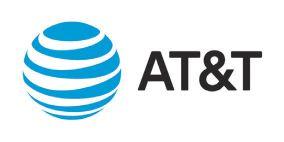
“And they’ve got employees here who are going to benefit from those announcements.”
Furthermore, “peer pressure exists in the business community,” Bogar added.



“When Wells Fargo raises its minimum wage to $15 an hour, other banks are going to have to be pretty close. Otherwise, people are going to take the job at Wells Fargo.”

The net result, for now, is a virtuous circle in which each new development tends to further economic growth.
“Although the inflation gauge is elevated, I would characterize the region as having a ‘Goldilocks’ economy,” wrote Ernie Goss, director of Creighton University’s Economic Forecasting Group, on Jan. 2.

“That is, not so hot as to push the Federal Reserve to raise interest rates at a stepped-up pace, but not so cool as to slow employment gains.”
Don’t misunderstand. These are odds we’re talking about, not certainties. Could events – a lengthy federal-government shutdown, a war with North Korea – intervene and render all of these guesses, however educated, obsolete?
Absolutely.
29
TAXES
These logos represent companies with a large presence in Minnesota, North Dakota and/or South Dakota that have announced tax-reform-related bonuses or other benefits for employees.
Not too hot, not too cold: That’s the regional economic outlook, thanks in part to federal tax reform, analysts tell Prairie
And remember, the tax bill neither benefits all individuals nor all corporations directly, said Heller, the Bismarck CPA.
For example, “if I have a C corporation that historically has made $50,000 in taxable income, I may actually have a tax increase,” he said.
The old corporate tax system had brackets, just like the individual tax system does. And before the reform, a C corporation – a corporation that’s taxed separately from its owners – that made up to $50,000 of taxable income was in a 15 percent tax bracket.
Post-reform, that company with $50,000 in taxable income will pay the new, flat corporate tax rate of 21 percent, which will boost its tax bill by about $3,000. “In general, the break-even point for these corporations seems to be about $90,000 in taxable income,” Heller said.
Of course, that’s just one example of the tax reform’s impact, involving one particular business structure: C corporations – and small C corporations at that.
There also are S corporations, sole proprietorships, partnerships, limited-liability companies, single member limited-liability companies and so on. The tax treatments for all of these is different and subject to limits and restrictions.
No wonder so many companies still are doing the accounting. “On the business side, Congress didn’t really simplify the tax code,” and that remains a key complaint among organizations that otherwise support tax reform, Bogar said.

But taking all of that into account, the net result still is likely to be positive for the regional economy.
Or so says a group of savvy but dispassionate observers: economists overseas.
“Germans fear huge loss of jobs from US tax reform,” read the headline Dec. 14 at global.handelsblatt.com.
German economists predict “significant amounts of new investment and jobs will shift from Europe to the United States,” according to the story, which cites tax experts at the University of Mannheim concluding that “Germany loses out in U.S. tax reform,” and quotes the head of a Munich-based think tank as saying, “Investments and jobs will migrate to the U.S.”
That opinion is widely shared, said the Minnesota Chamber’s Kadoun. “I think you’re hearing that in quite a few countries now, where they are concerned because the U.S. has made its taxes more competitive, and they are losing some of the tax advantages that they’d had,” she said.
Rick Thoreson is a partner at Thoreson Steffes Trust Co. in Fargo, a financial management firm. Most companies in the Midwest are small companies, and the tax reform’s key provisions tend to be favorable to them, Thoreson said.

“As I understand it, this should be a significant boost to growing businesses, allowing them to reinvest more in their companies,” Thoreson said.
As a result, “we should see a stronger business environment in our region in 2018, and perhaps even more so in 2019 when business owners and tax preparers understand it better.”
Tom Dennis EDITOR, PRAIRIE BUSINESS


30 TWITTER.COM/PRAIRIEBIZ FACEBOOK.COM/PRAIRIEBUSINESS PRAIRIEBUSINESSMAGAZINE.COM
TAXES FEBRUARY 2018 VOL 19 ISSUE 2
Rick Thoreson
Beth Strinden Kadoun
Brent Bogar
TDENNIS@PRAIRIEBUSINESSMAGAZINE.COM
Randy Heller
701-780-1276











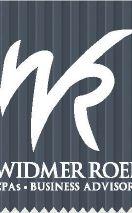

31 So, how much are my little deductions worth now? Like your little ones, tax laws are always changing. The child tax credit for 2018 has now increased to $2,000 per child. We understand taxes can be a handful, but we’ll make them seem like child's play. Give us a call today, and we’ll cut through the jargon. 701-237-6022 widmerroelcpa.com We Speak Your Language.
North Dakota
By Tom Regan
BISMARCK, N.D. – Glance to the right as you reach the Bismarck side of the Grant Marsh Bridge from the west on Interstate 94, and perched on the top of the bluff you’ll see the North Dakota Safety Council’s impressive new home.
The modern structure, one of the most sophisticated training centers in the region, represents Phase One of a $6 million building project that dramatically advances the 50-year-old nonprofit’s mission of preventing injuries and deaths in our workplaces, on our streets and highways and in our homes.

The 24,000-square-foot safety campus, a vision five years in the making, is located near the MDU Resources Community Bowl and the Bismarck Aquatic Center. It was designed and built to grow and enhance what the organization does best: safety training, especially of the hands-on variety.
“It is so not an office building,” explained executive director Chuck Clairmont after making the move to the new facility. “The office portion was the last consideration. The main focus was on the classrooms and enhancing and extending the classroom experience.”
The features of the new safety campus, such as a 26-foot indoor training tower where realistic fall-protection and confined-spaces training can take place, enable the NDSC to offer top-notch, experiential learning on a year-round basis.
Phase Two of the safety campus vision will include an indoor, dirtfloor arena to accommodate training in trenching, excavating and equipment operation. Multiple group training rooms equipped with
The House of Safety
the latest in technology further expand the Safety Council’s reach and impact.
Headquartered in Bismarck with offices in the North Dakota communities of Beulah, Fargo and Minot, the Safety Council has grown exponentially during the 10 years of Clairmont’s leadership. The staff has grown from just a handful to 28 employees. Some of the country’s top trainers offer more than 120 courses impacting 50,000 people a year.
Membership has grown by 25 percent. The council’s three-day safety and health conference every February attracts 1,000 attendees from 20 states and multiple provinces, along with 175 vendors and sponsors.
A Bismarck native and self-described “numbers man,” Clairmont, 50, worked for an international accounting firm, as chief financial officer for a regional auto parts dealer and for an international medical research company before entering the safety world. But it’s safety that’s now his great passion, he says, and the passion is shared by his staff.
“Every single person at our facility could go someplace else and probably make more money doing something else, but you get into the safety world, and it’s captivating,” said Clairmont. “You start realizing how you can make an impact in people’s lives.”
The council held a Grand Opening on Sept. 19 to show the public the new safety campus. “We’re here to offer a maximum amount of training in a great setting, delivered by trainers who really care,” said Clairmont.
32 TWITTER.COM/PRAIRIEBIZ FACEBOOK.COM/PRAIRIEBUSINESS PRAIRIEBUSINESSMAGAZINE.COM FEBRUARY 2018 VOL 19 ISSUE 2 Nonprofit
The North Dakota Safety Council’s new safety campus is a 24,000-square-foot training facility located at 1710 Canary Avenue in Bismarck, N.D. IMAGE: NDSC
The
Safety Council’s new home is a temple of training, preparation and risk reduction
How the NDSC is Funded
50 percent: Fee-for-service training


25 percent: Grants and donations
15 percent: Annual conference
10 percent: Membership
33 Nonprofit
Instructors from Roco Rescue -- a Louisiana-based company that provides rescue training, equipment and services -- were on hand during the NDSC’s grand opening in September to demonstrate rescue techniques on the training tower. IMAGE: NDSC
The Andeavor Hands-On Training Lab holds the 26-foot-tall training tower featuring multiple confined spaces, levels, doors and ladders to simulate scenarios for hands-on training. IMAGE: NDSC
A Q&A with Clairmont
Prairie Business: How did you choose the present site for the safety campus?
Clairmont: Location is key. This is not just a facility that’s going to support Bismarck; it’s going to support the region. We needed close access to highways, hotels and restaurants.

We also want to work with Bismarck State College and its students. It’s important to influence people in college or even at a younger level about safety before they join the workforce. Considering all the industries BSC is working with – oil and gas, construction, the utility industry – we really want to partner with them.
PB: You’re a believer in simulated, hands-on training.
Clairmont: To sit in a classroom and listen to an instructor, whether it’s with PowerPoint or whatever else, is valuable and it has to happen. But to physically be able to incorporate the discussion into an activity has much more impact.
I use the example of First Aid/ CPR. Can you imagine learning CPR just sitting in a classroom watching TV? To actually get the mannequins out and perform the breaths and do the chest pumps means you leave the training with the confidence that you can do it.

So we tie the classroom to actual hands-on learning, whether it’s rigging something, fall protection or confined-spaces training.
PB: What kind of impact do you feel this new facility will make?
Clairmont: We touch 50,000 people a year now, which is so important to us. We feel the new campus is going to add another 20, 30, 40 percent.
Because of this facility, hopefully, we’ll get recognition in the city, state and region, with people saying the Safety Council has truly taken the next step in safety training. Industries that slow down during the off-season will be able to train employees indoors yearround at our facility.
PB: You had an outstanding high school and college athletic career. Talk about how sports has influenced your life.
Clairmont: Sports has been the basis of everything for me. The competition was big to me, to always strive to be the best. My father died from alcoholism, and I had great coaches early on who recognized my home issues and the emotional piece of me that drove me to be successful. Sports was a way of showing my father I was good enough in something, and I didn’t have to follow in his footsteps. My sports background also has helped me make connections in business over the years, and I’ve continued to benefit from great teachers and mentors – people whom I greatly respect. PB
Tom Regan FREELANCE WRITER BISMARCK TREGAN@BIS.MIDCO.NET
34 TWITTER.COM/PRAIRIEBIZ FACEBOOK.COM/PRAIRIEBUSINESS PRAIRIEBUSINESSMAGAZINE.COM
Chuck Clairmont, executive director and CEO of the North Dakota Safety Council, stands at the podium on Oct. 4, 2016, at the groundbreaking for the council’s new Safety Campus. IMAGE: NDSC
FEBRUARY 2018 VOL 19 ISSUE 2
A group of students learn CPR/First Aid in the North Dakota Safety Council’s new training-lab classroom while NDSC instructor John Woutat observes. IMAGE: NDSC
Nonprofit


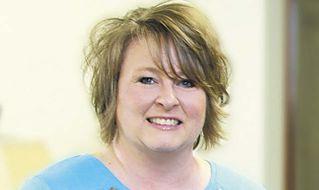
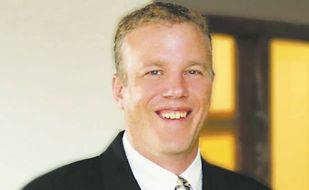


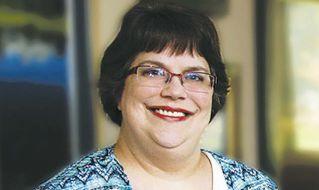
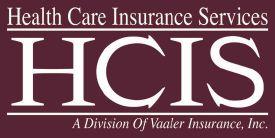
35 Helping Clients Manage Risk 70 Years of History, Planning for the Future 1.800.553.4291 - www.vaaler.com Grand Forks|Fargo|Bismarck|Minneapolis
Kim Van Sant
Matt Ahmann
Crystal Coulter
Georgia Schelberger
001672001r1 Nonprofit Students rinse o simulated chemicals during a course
in the North Dakota Safety Council’s new Andeavor Hands-On Lab. IMAGE: NDSC
Nicola Sporbert
held
INSIGHTs & INTUITION
What’s the most useful or positive trend you’re seeing in the field of corporate human relations?
There are several trends coming for 2018. One is blind hiring, which would benefit everyone because of the issue of gender pay disparities.
Blind hiring strips away certain identifying information from resumes, enabling the first screening to be based entirely on abilities and achievements.
Second, passive hiring. At times, the best person for the job might be the person who isn’t even looking for it. We need to start networking and searching social media to find the person we are looking for to fit the job we have.
Sometimes, you don’t know you want another job until an opportunity is presented.
Third, having a workforce that can work remotely lets companies search anywhere for the right candidate. This also is a great boost for job satisfaction as it provides a better work/life balance.
People who work in an environment that is set for their needs perform better, so their company performs better.
SHANE ZUTZ DIRECTOR OF HUMAN RESOURCES DIGI-KEY THIEF RIVER FALLS, MINN
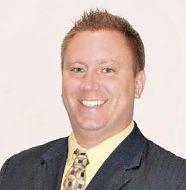
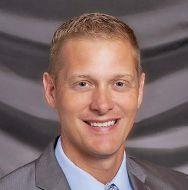

Human Resources is changing so quickly that it’s hard to focus on one specific thing! The most positive trend I see is CEOs and boards seeing the importance of HR being a strategic partner in driving overall business strategy.
Human Resources traditionally has been administrative and transactional in nature. But for businesses to thrive during this time of digital transformation, HR has to equip the business to drive strategy, build culture and cultivate transformative leadership to meet the demands of customers.
Human Resource partners who create value for the business will find that everyone from front-line managers to the CEO will see the importance of aligning business practices inside the company to customers’ expectations from outside the company.
36 TWITTER.COM/PRAIRIEBIZ FACEBOOK.COM/PRAIRIEBUSINESS PRAIRIEBUSINESSMAGAZINE.COM
INSIGHTs&intuition FEBRUARY 2018 VOL 19 ISSUE 2
TO
Q.
BROUGHT
YOU BY
JUSTIN STANSBURY VICE PRESIDENT CORPORATE TECHNOLOGIES FARGO, N.D.
NANCY BJORNDAHL
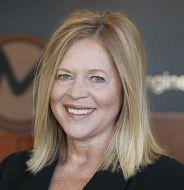 BUSINESS MANAGER
BUSINESS MANAGER
Dakota Carrier Network has been using social media to recruit candidates who are not only technically qualified, but also good culture fits for our organization.
Social networks such as LinkedIn, Twitter and Facebook are effective ways to take a comprehensive look at a large candidate pool, and as such, they help us hire highly qualified talented employees.
With only 33 employees, DCN is a small company accomplishing big things. By recruiting and developing a skilled-diverse workforce, our team has been able to achieve a very high level of productivity, allowing us to strengthen our competitive edge.
The shift toward more flexible work schedules is really having an impact.
Flexible work schedules encourage a greater work-life balance for employees, and studies have shown this improves both employee engagement and productivity.
A company that can offer flexible schedules has an advantage over other companies from a recruitment and a retention standpoint. Of course, flexible schedules are not for everyone or for every company. But in 2018, our company will be researching flexible work schedules to see if we can incorporate a policy for employees who are in eligible positions.
DARREN WALKER
VICE PRESIDENT, HUMAN RESOURCES SANFORD HEALTH


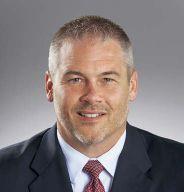
With what is happening across the country today, the #MeToo campaign is exposing the “underlying” culture and leadership in corporate America. We are seeing the empowerment of individuals to speak up – individuals who previously may not have felt they had a voice.
The result creates transparency. It’s a window into an organization’s culture.
This is having a positive influence on the ability of organizations to identify, develop and cultivate leaders to create cultures of dignity, respect, integrity and equality.
One of the more exciting trends in corporate human relations is the focus on employee engagement. Employees who are engaged tend to be passionate advocates for their organization. How is this being done?
While it is important to provide a competitive wage and benefit package, it is also as important (if not more important) to provide a great work experience. Providing a more challenging work environment, with a strong work culture and more work/life balance, are just a few of the things that provide a better work experience.
A better work experience = stronger employee engagement.
37 INSIGHTS & INTUITION
SIOUX FALLS, S.D.
DAKOTA CARRIER NETWORK FARGO, N.D.
BANK & TRUST BISMARCK, N.D.
ERIC WINGENBACH RECRUITMENT ADMINISTRATOR FIRST INTERNATIONAL
JONI SMITH
HUMAN RESOURCES MANAGER MOORE ENGINEERING WEST FARGO, N,D.
Foreign-born share of population
2012-16 estimates. This chart originally appeared in fedgazette, the magazine of the Minneapolis branch of the U.S. Federal Reserve.
Source: U.S. Census.
Crime rate comparisons: U.S. and the states

Source: MuniNetGuide. com, which drew from the FBI’s 2016 Uniform Crime Reports.
Violent crimesper100,000ppl Property crimesper100,000ppl
Notes from MuniNetGuide.com:
“Minnesota’s violent crime rate is 35.4 percent lower than the national median, and the property crime rate is 17.4 percent lower. Larceny-theft is a larger proportion of overall crime in Minnesota (69 percent) than the national median (63 percent).”
“North Dakota’s violent crime rate is 32.2 percent lower than the national median, and the property crime rate is 11.1 percent lower. North Dakota has a similar proportional makeup of crimes by type to the national median.”
Source: U.S. Census, Minnesota State Demographic Center estimates. This chart originally appeared in fedgazette, the magazine of the Minneapolis branch of the U.S. Federal Reserve.
North Dakota field production of crude oil
End point: Oct. 2017 – 36,082 thousand barrels

Source: U.S. Energy Information Administration

“South Dakota’s violent crime rate is 13.0 percent higher than the national median, and the property crime rate is 23.3 percent higher. South Dakota has a similar proportional makeup of crimes by type to the national median.”
Changes in per-capita personal income over time, U.S. and states in the region
Source: U.S. Bureau of Economic Analysis

38 TWITTER.COM/PRAIRIEBIZ FACEBOOK.COM/PRAIRIEBUSINESS PRAIRIEBUSINESSMAGAZINE.COM FEBRUARY 2018 VOL 19 ISSUE 2 BYTHENUMBERS
15.0 12.5 10.0 7.5 5.0 2.5 0.0 U.s MinnesotaWisconsinNorth DakotaSouth DakotaMontana
25k 20k 15k 10k 5k 0k -5k -10k -15k
60,000 55,000 50,000 45,000 40,000 35,000 30,000 25,000 20,000 15,000 1990199419982002200620102014 United States Minnesota N. Dakota S. Dakota Per capita personal income (dollars) 40,000 1985199019952000200520102015 20,000 30,000 10,000 0
Thousand barrels United States (median) 370.32582.1 Minnesota 242.62133.3 North Dakota 251.12295.9 South Dakota 418.41980.6




















































































































































 President & CFO
President & CFO










 Heather Springer EMPLOYMENT LAW ATTORNEY WOODS, FULLER, SHULTZ AND SMITH P.C. SIOUX FALLS, S.D. HEATHER.SPRINGER@WOODSFULLER.COM
Heather Springer EMPLOYMENT LAW ATTORNEY WOODS, FULLER, SHULTZ AND SMITH P.C. SIOUX FALLS, S.D. HEATHER.SPRINGER@WOODSFULLER.COM



















































































 By Tom Dennis
By Tom Dennis

 IMAGE: NICK NELSON/FORUM NEWS SERVICE
Mike Halvorson of Auer Steel & Heating Supply, Fargo, N.D., holds a tablet to show the use of automated home security cameras.
IMAGE: NICK NELSON/FORUM NEWS SERVICE
IMAGE: NICK NELSON/FORUM NEWS SERVICE
Mike Halvorson of Auer Steel & Heating Supply, Fargo, N.D., holds a tablet to show the use of automated home security cameras.
IMAGE: NICK NELSON/FORUM NEWS SERVICE




































 BUSINESS MANAGER
BUSINESS MANAGER




































